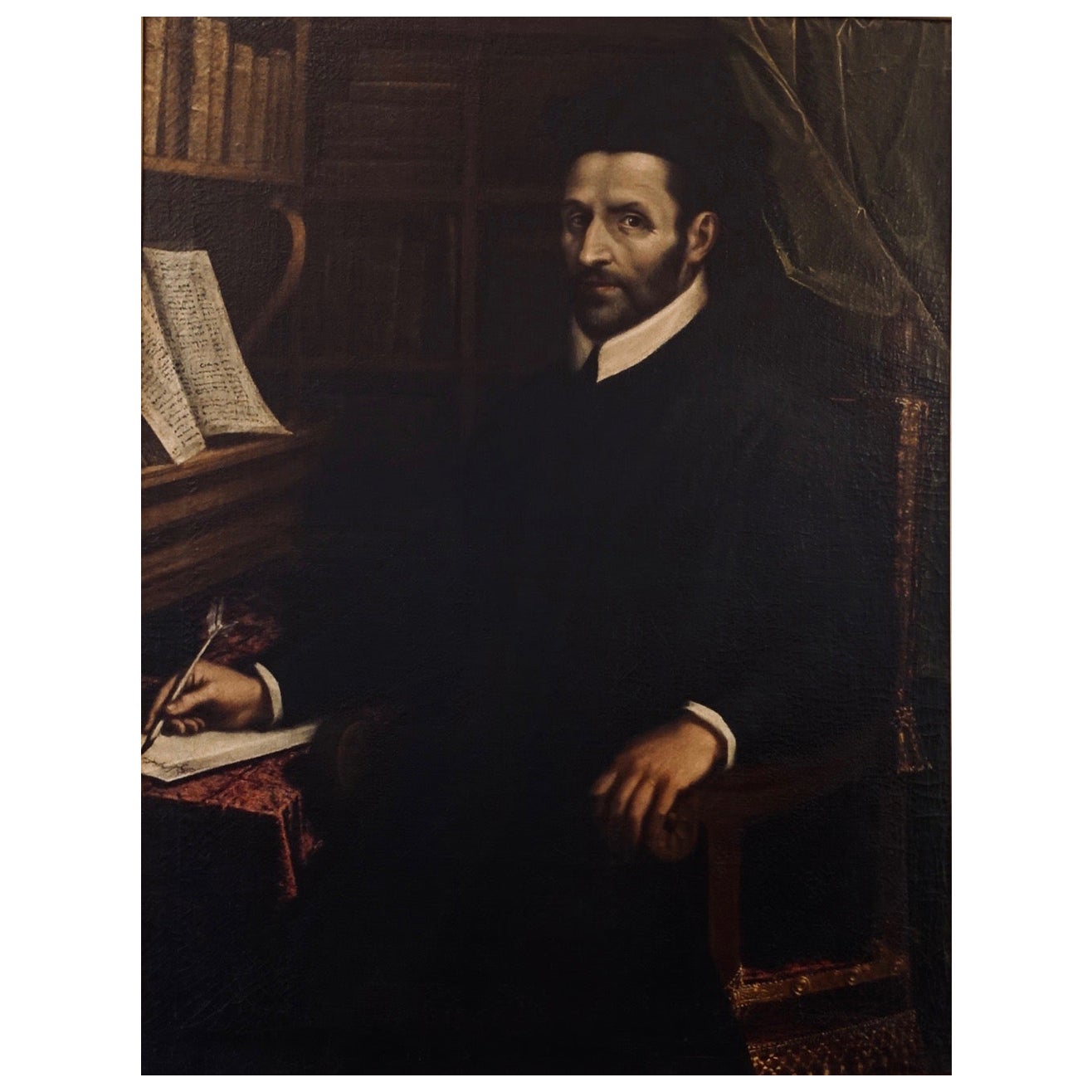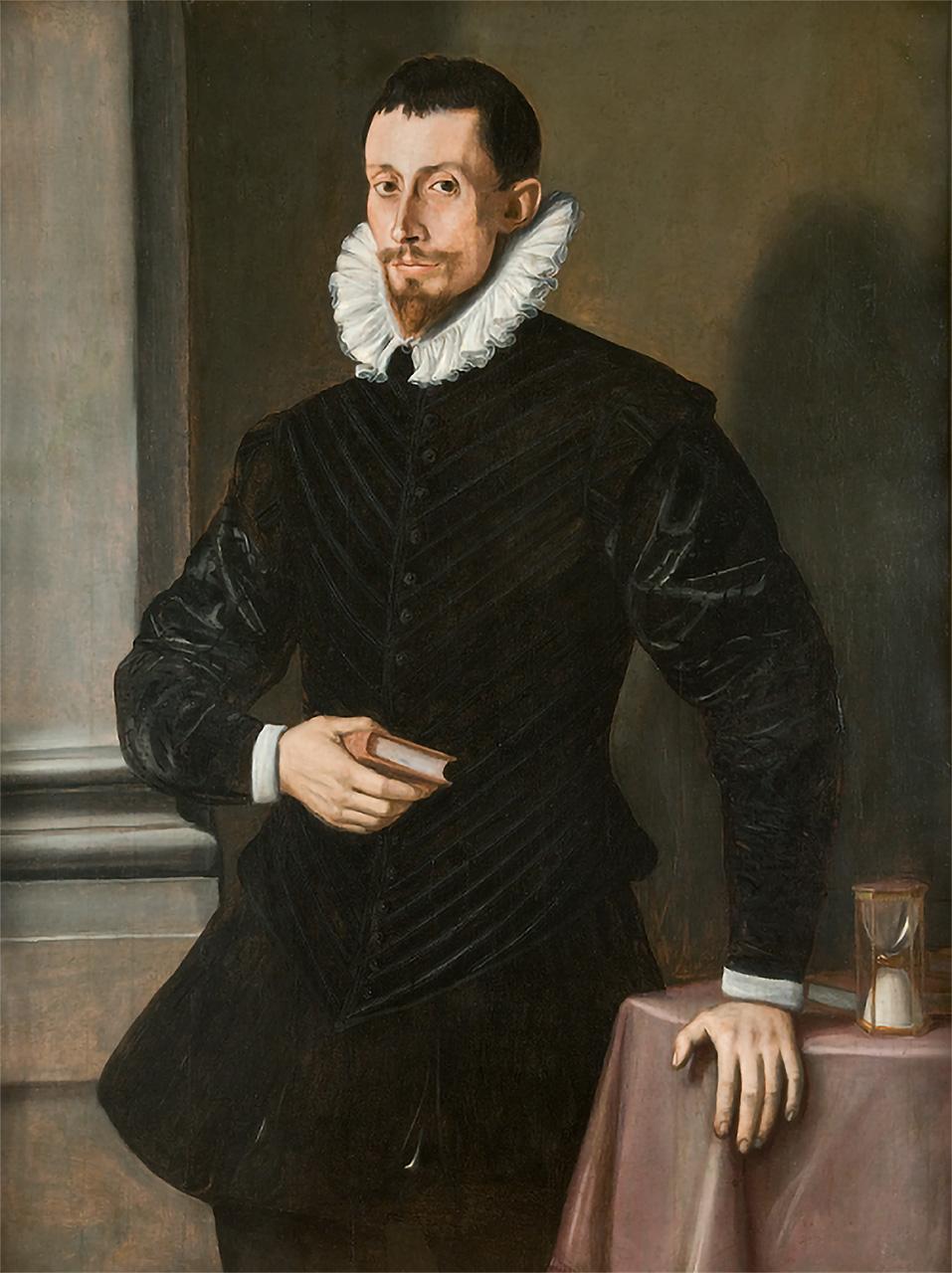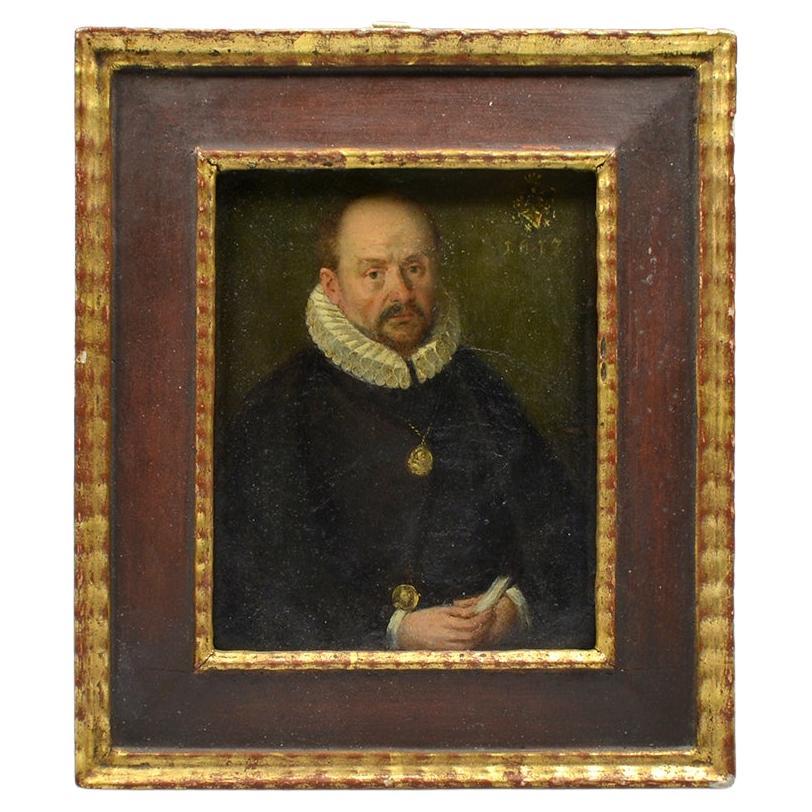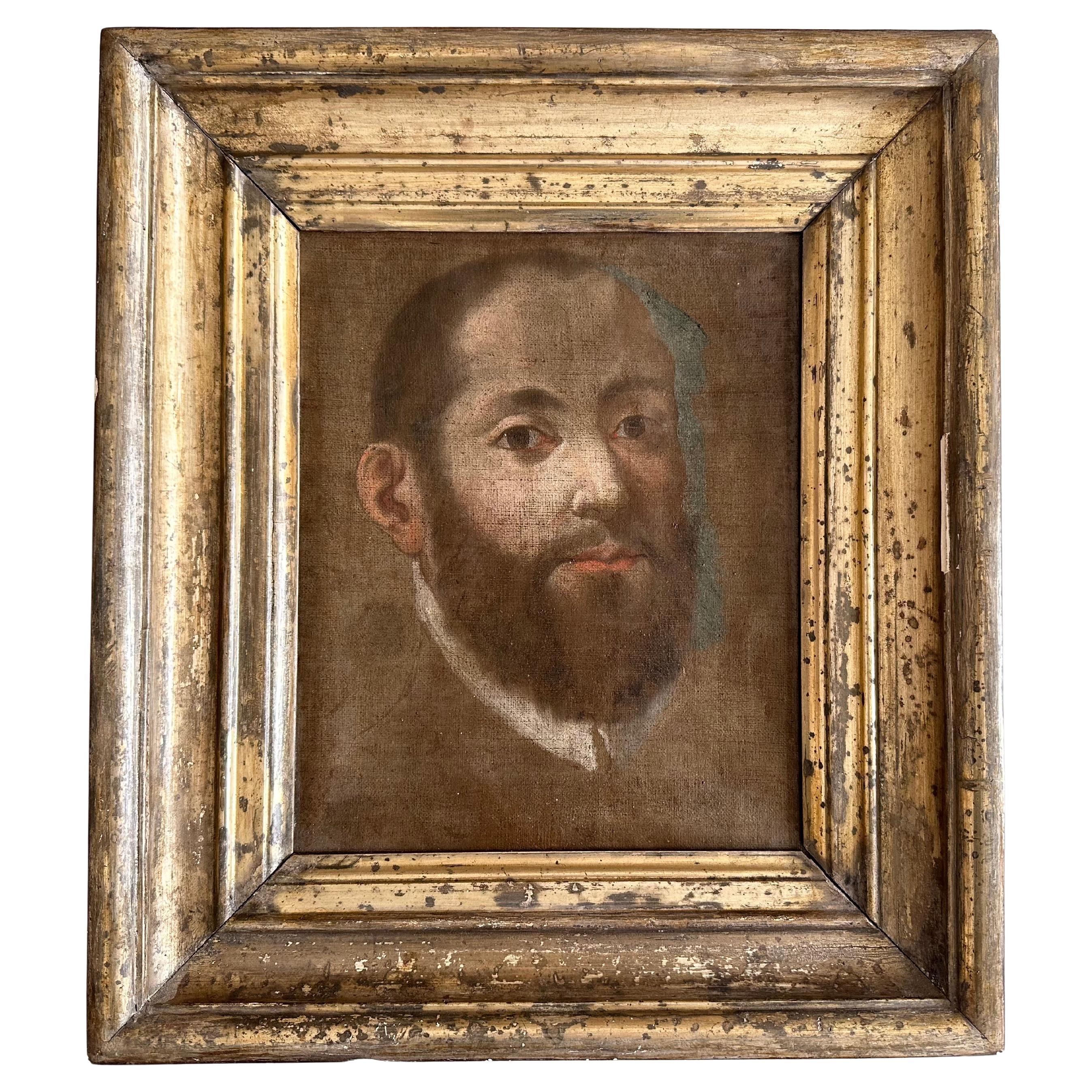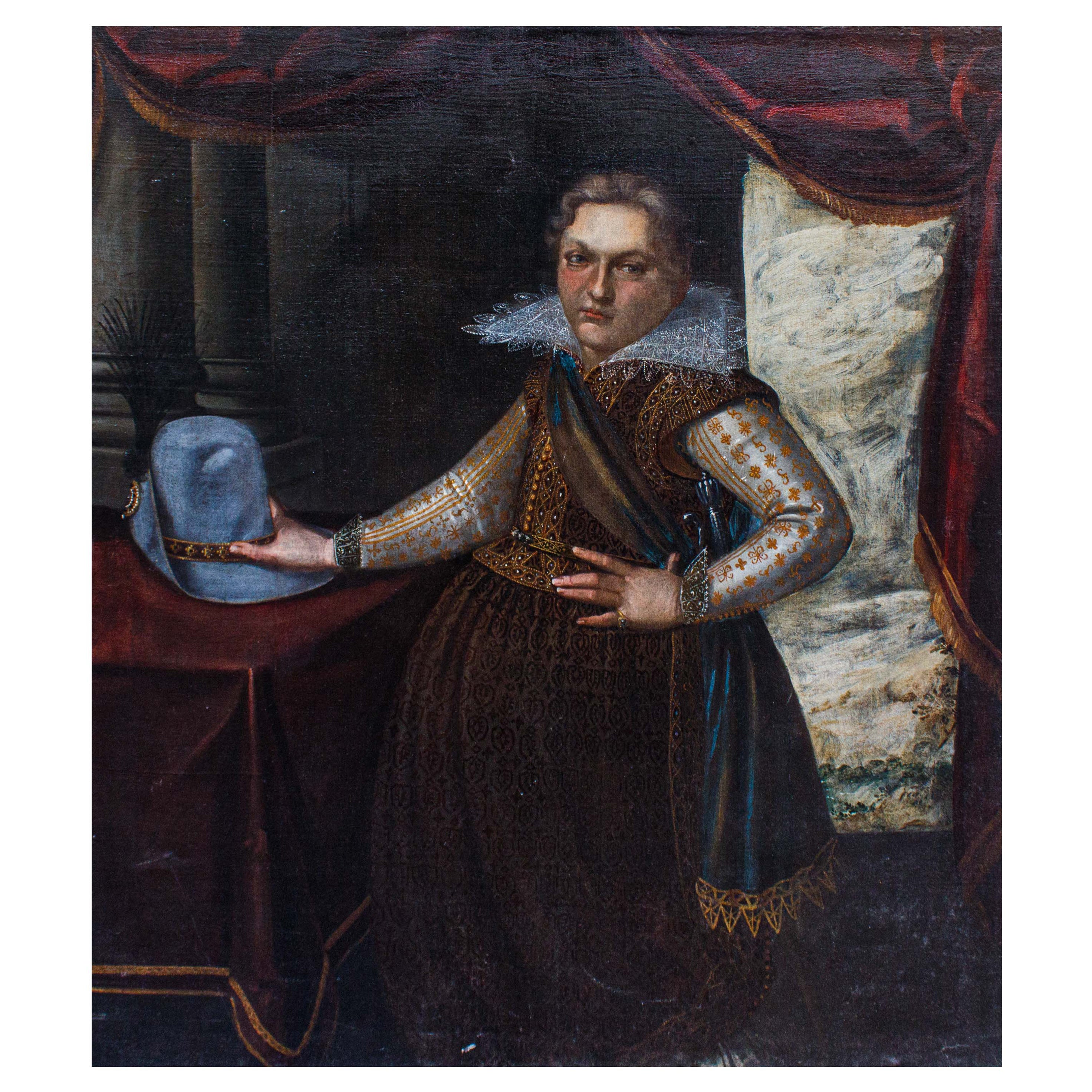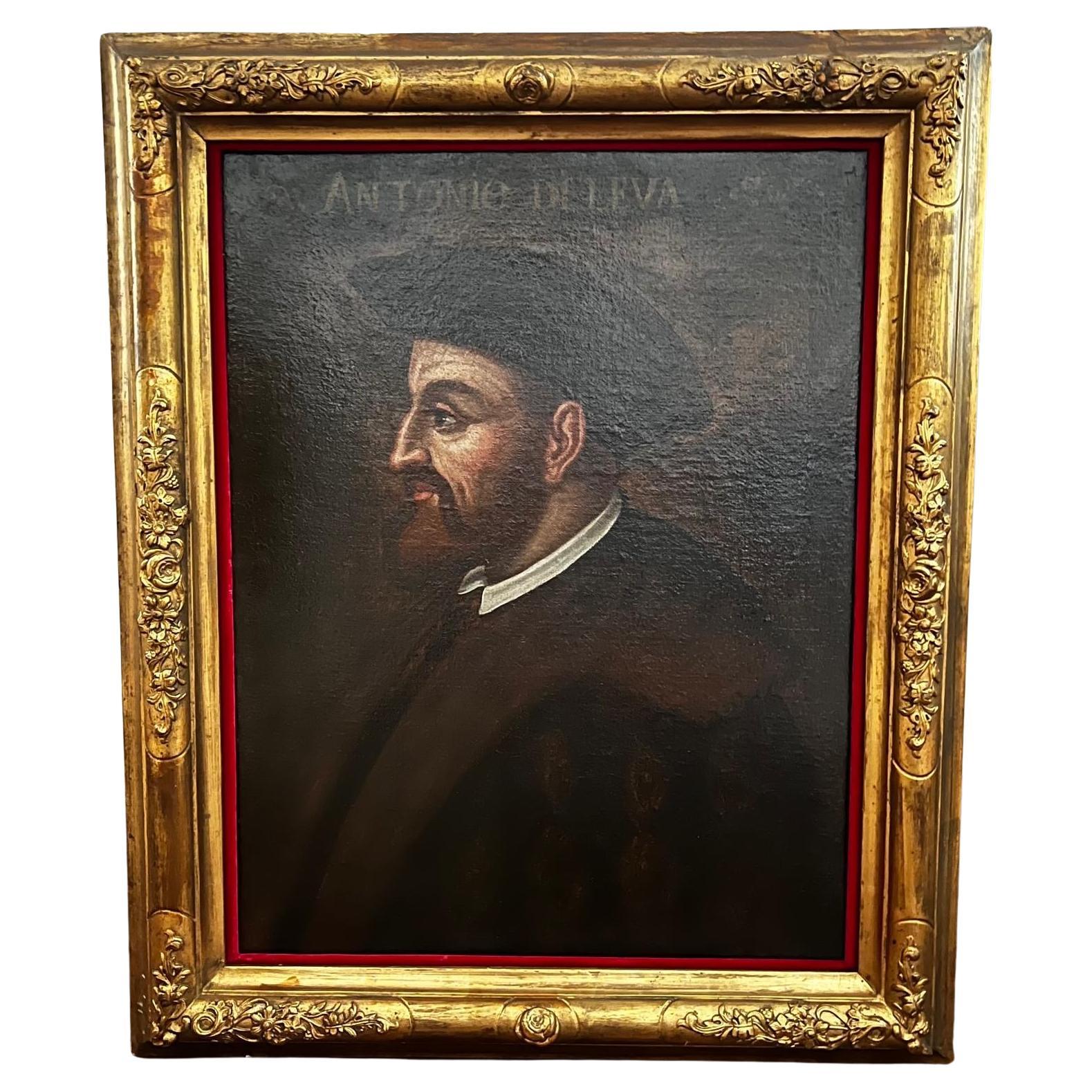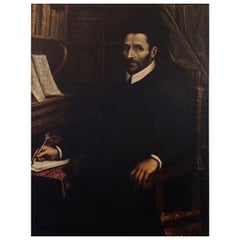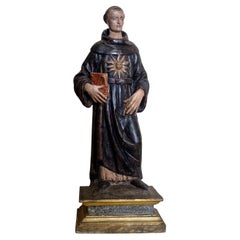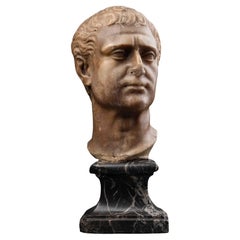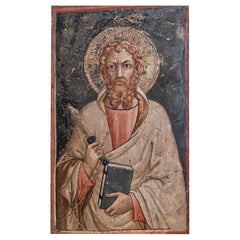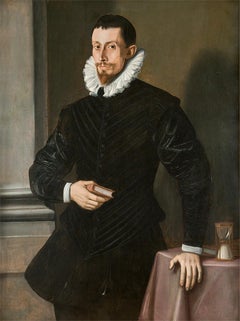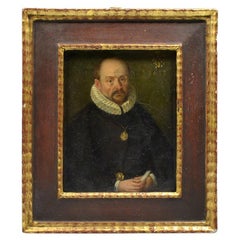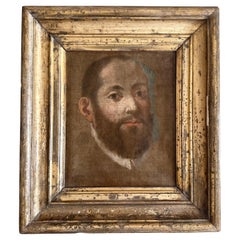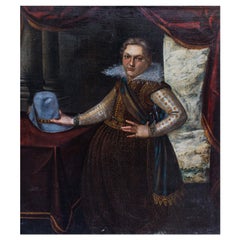Items Similar to Portrait of Gentleman from Della Ruota Family, Lombardy, Dated 1624
Want more images or videos?
Request additional images or videos from the seller
1 of 6
Portrait of Gentleman from Della Ruota Family, Lombardy, Dated 1624
$23,662.05
£17,987.11
€20,000
CA$33,253.46
A$36,163.89
CHF 19,051.95
MX$439,217.34
NOK 239,521.47
SEK 224,532.03
DKK 153,157.35
About the Item
Portrait of a Gentleman from Della Ruota family
Lombardy, dated 1624
Oil on canvas
Measures: 105 x 81 cm (without the frame)
The coat of arms at the top left of the portrait identifies the effigy as an aristocrat belonging to the Lombard family Della Ruota, represented at the age of 61 in 1624.
The presence of vanity at the bottom right is a clear reference to the passage of time, to the aging and dying body.
The book on which he places his hand and the carpet allude to his social status as a literate man belonging to a wealthy family.
Very good conditions.
- Dimensions:Height: 41.34 in (105 cm)Width: 31.89 in (81 cm)Depth: 1.97 in (5 cm)
- Style:Renaissance (Of the Period)
- Materials and Techniques:
- Place of Origin:
- Period:
- Date of Manufacture:1624
- Condition:
- Seller Location:Bruxelles, BE
- Reference Number:1stDibs: LU6666231440852
About the Seller
5.0
Vetted Professional Seller
Every seller passes strict standards for authenticity and reliability
1stDibs seller since 2022
15 sales on 1stDibs
Typical response time: <1 hour
- ShippingRetrieving quote...Shipping from: Bruxelles, Belgium
- Return Policy
Authenticity Guarantee
In the unlikely event there’s an issue with an item’s authenticity, contact us within 1 year for a full refund. DetailsMoney-Back Guarantee
If your item is not as described, is damaged in transit, or does not arrive, contact us within 7 days for a full refund. Details24-Hour Cancellation
You have a 24-hour grace period in which to reconsider your purchase, with no questions asked.Vetted Professional Sellers
Our world-class sellers must adhere to strict standards for service and quality, maintaining the integrity of our listings.Price-Match Guarantee
If you find that a seller listed the same item for a lower price elsewhere, we’ll match it.Trusted Global Delivery
Our best-in-class carrier network provides specialized shipping options worldwide, including custom delivery.More From This Seller
View AllLeandro Bassano - 17th century - Portrait of a Savant
By Bassano
Located in Bruxelles, BE
Leandro Bassano (Bassano del Grappa 1557 - Venise 1662)
Portrait of a savant
Venise, XVI century
Oil on canvas; modern frame.
Measures: 117 x 88 ...
Category
Antique 17th Century Italian Renaissance Paintings
Materials
Canvas
$18,929 Sale Price
20% Off
Agnolo di Polo Firenze 1470 - Arezzo 1528' - Saint Nicholas of Tolentino
Located in Bruxelles, BE
Agnolo di Polo (Firenze 1470 - Arezzo 1528)
Saint Nicholas of Tolentino
Around 1510-1520
Painted and gilded terracotta
55.5 x 24 x 16.5 cm
San Nicholas de Tolentino is represe...
Category
Antique 16th Century Italian Renaissance Figurative Sculptures
Materials
Terracotta
$15,136 Sale Price
20% Off
Renaissance Marble Portrait - Northern Italy, 17th century
Located in Bruxelles, BE
Renaissance Marble Portrait
Northern Italy, 17th century, inspired by antiquity
Marble
36 x 13 cm (including the marble pedestal)
This Renaissance portrait head of a young man, sl...
Category
Antique 17th Century Italian Renaissance Figurative Sculptures
Materials
Marble
$9,464 Sale Price
20% Off
Circle of Pietro Cavallini - St. Bartholomew - 14th century Fresco
Located in Bruxelles, BE
Circle of Pietro Cavallini (Rome, 1250–1330)
St. Bartholomew
Fresco transferred onto canvas
Umbria, 14th century
66.5 x 40 cm
Provenance:
Collection of Raymond Van Marle (The Hagu...
Category
Antique 15th Century and Earlier Italian Medieval Paintings
Materials
Canvas, Plaster
Allegory of Africa - 16th century
Located in Bruxelles, BE
Flemish school of the 16th century
Allegory of Africa
After The Allegories of the Continents by Maerten de Vos (engraving by Adriaen Collaert)
Oil on copper
Inscription: "Giulio Ro...
Category
Antique 16th Century Belgian Renaissance Paintings
Materials
Copper
Bolognese School of the 16th Century - Mummy of Saint Catherine of Bologna
Located in Bruxelles, BE
Bolognese School of the 16th Century
Mummy of Saint Catherine of Bologna
Oil on Panel
20,5 x 7 x 0,8 cm
This rare painting depicts Saint Catherine of Bologna as a mummy, housed in a ...
Category
Antique 16th Century Italian Renaissance Paintings
Materials
Wood, Giltwood
$3,312 Sale Price
20% Off
Free Shipping
You May Also Like
Early 17th Century by Tiberio Titi Portrait of a Gentleman Oil on panel
Located in Milano, Lombardia
Tiberio Titi (Florence, Italy, 1573 – 1638)
Title: Portrait of a Gentleman
Medium: Oil on panel
Dimensions: Without frame 122 x 91 cm – with frame 162 x 133 x 10 cm
Publications: G...
Category
Early 17th Century Old Masters Portrait Paintings
Materials
Oil, Wood Panel
$84,142 Sale Price
20% Off
1612 Portrait of a man with two Gnadenpfennigs, likely Wilhelm Daser (1566-1639)
Located in UTRECHT, UT
German school, unsigned but attributed to Lorenz Strauch, dated 1612.
Oil on copper, ca. 10.5 x 13.0 cm. Including frame: 17.0 x 19.5 cm
Portrait three-quarter facing, dressed in...
Category
Antique 1610s German Other Paintings
Materials
Copper
18th Century Italian Portrait of a Gentleman with Gilt “Berliner Leiste” Frame
Located in Hamburg, DE
This 18th-century Italian portrait depicts a distinguished gentleman in a loosely sketched, slightly misty style, giving the painting a soft, atmospheric quality. Although unsigned, ...
Category
Antique Early 18th Century Italian Baroque Paintings
Materials
Canvas, Wood
16th-17th Century Gentleman’s Portrait Oil on Canvas by Francesco Zucco
Located in Milan, IT
Francesco Zucco (circa 1575-1627)
Gentleman’s portrait
Measures: Oil on canvas, cm 120 x 140
The painting analyzed here belongs to the pictorial production of Francesco Zucc...
Category
Antique Early 17th Century Paintings
Materials
Canvas
Antique Portrait Antonio de Leyva Prince of Ascoli (1480-1536) Oil on Canvas
Located in Doha, QA
Antonio de Leyva, Duke of Terranova, Prince of Ascoli (1480–1536) was a Spanish general during the Italian Wars. During the Italian War of 1521, he commanded Pavia during the siege o...
Category
Antique 16th Century Italian Renaissance Paintings
Materials
Canvas
Portrait of Senator Bartolomeo Panciatichi by Santi di Tito (1574)
Located in PARIS, FR
This recently rediscovered portrait of Santi di Tito depicts a Florentine senator, with a letter in his hand indicating that the painting was executed in 1574 when the sitter was 66 years old. On the basis of these clues, it is tempting to view it as a portrait of Bartolomeo Panciatichi, who was painted some thirty years before by Bronzino (1503 - 1572). While the treatment of the hands recalls the Florentine tradition of Mannerist portraits, the comparison with Bronzino's portrait illustrates Santi di Tito's search for greater realism, despite the stereotyped composition.
1. Santi di Tito, Counter-Reformation painter and portraitist
Santi di Tito was the great painter of the Florentine Counter-Reformation. He proposed a new artistic language that broke away from Mannerism.
Little is known about his training in Florence (perhaps alongside Bronzino or Baccio Bandinelli), but this period of training enabled him to join the Company of Saint Luke, the guild of Florentine painters, in 1554. Between 1560 and 1564, Santi di Tito spent time in Rome, where he frequented the workshop of Taddeo Zuccari. This stay had a fundamental influence on his work, thanks to the discovery of the late work of Raphael, but also his encounters with the painters Francesco Salviati and Federico Barocci.
Around 1565, Santi di Tito returned to Florence, where he remained until the end of his life, dividing his talents between the creation of important religious paintings and countless portraits. He became one of the city's leading painters, distinguishing himself, in particular, in the creation of large religious compositions in which the spirit of the Counter-Reformation was reflected.
In 1568, Santi di Tito became a member of the Confraternity of Saint Thomas Aquinas...
Category
16th Century Old Masters Portrait Paintings
Materials
Poplar, Oil
More Ways To Browse
Pascale Taurua
Patricia Highsmith
Persian Painting Large
Peru Painting Saint
Peter Sakowski
Pharaoh Horses
Pierre Narcisse Guerin
Pin Up Girl Vintage Illustration
Portrait Of A Mandarin
Poul Steffensen
Robert Kinsell
Roy M Steinberg
Russian Icon Frame
Russian Paintings Of Saints
S Oliphant
Sarah Dupre
Scandinavia Still Life Painting
Sherry Schrut
